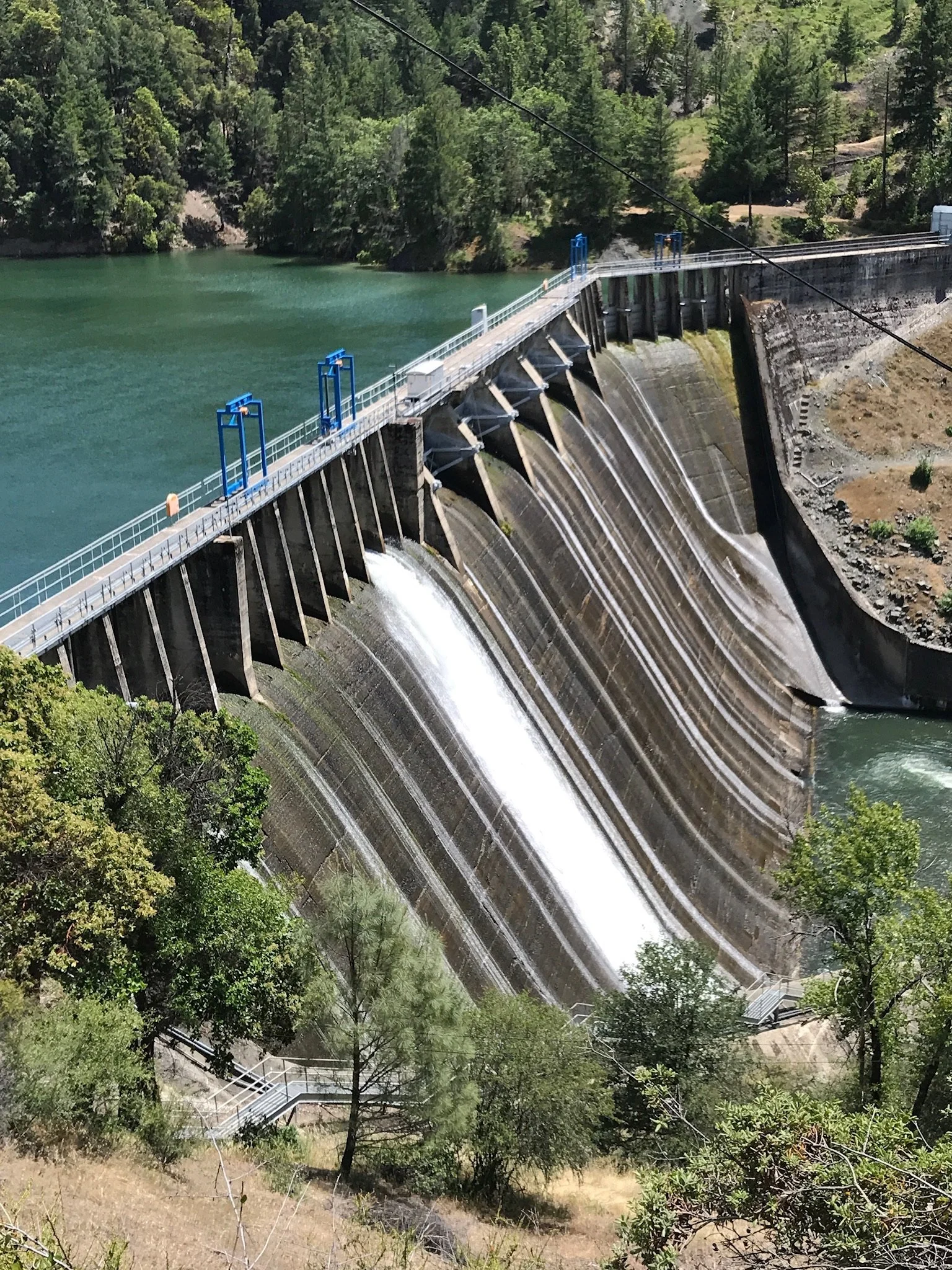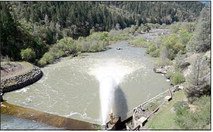MENDOFEVER - JUNE 2, 2022
By Sarah Reith
Russian River water users are preparing for another dry year, with water rights curtailments for those who depend on Lake Mendocino, and the possibility of just a trickle coming out of Lake Pillsbury.
PG&E, which still owns and operates the Potter Valley Project under an annual license, has asked the Federal Energy Regulatory Commission (FERC) to give it permission to release five cubic feet of water per second from Lake Pillsbury into the East Branch of the Russian River, which flows into Lake Mendocino. This is a variance from the 75 cubic feet per second that’s otherwise required for this time of year.
Elizabeth Salomone, the General Manager of the Russian River Flood Control and Water Conservation Improvement District, says that although last year’s variance was the same, water managers were expecting five times as much this year. That was based on the storage levels in Lake Pillsbury, which filled during winter storms, and the terms of the license. “In other words, the request for five cfs is a significant change from the current license,” she asserted; “and I believe there will be questions. What is the justification for that great change, from the expected 25, based on conditions, and what they’ve asked for. The five.”
Last year, PG&E aimed to have 12,000-acre feet in Lake Pillsbury by the end of the water year in the fall. This year, after consulting with the Round Valley Indian Tribes and state and federal regulators, PG&E wants to make sure it maintains at least 30,000-acre feet in the reservoir. That’s to create cold water pools below Scott Dam, for the benefit of endangered salmonids.
Alicia Hamann, the Executive Director of Friends of the Eel River, says it’s time to face the facts of water scarcity. “I think that makes it eight of the last ten years that they’ve required a variance to operate the project,” she said; “and it’s just really telling that the status quo is not sustainable… It’s not sustainable for the interests in the Eel River, nor for water users in the Russian River. And I think seeking a new future for the (Potter Valley) Project and for the Pillsbury Basin is just in the interests of everyone.”
In a letter to FERC, PG&E wrote that if it has to continue releasing 75 cubic feet per second, Lake Pillsbury will be drawn down so low that its banks could be destabilized, which could affect the safety of Scott Dam. Janet Pauli, of the Potter Valley Irrigation District, expects the District to continue getting its 50 cubic feet per second on demand; “but the minimum instream flow going to five without a buffer is a dramatic decrease…If we start the year off as a dry year, that would give us a 25 cubic feet per second buffer, and then what we believe is they should watch the lake level carefully. If it gets to a point where it drops too precipitously, they could incrementally reduce the diversion rates through the Project.”
The irrigation district also submitted a letter to FERC, complaining that PG&E had not consulted with a full range of stakeholders before requesting the variance. Last year, FERC required PG&E to consult with a drought working group to have the same variance approved.
In its proposal to FERC, PG&E wrote that it does plan to reconvene the drought working group, but if the full group is unable to agree on flow adjustments, the determination will be settled on by the Round Valley Indian Tribes, the California Department of Fish and Wildlife, and the National Marine Fisheries Service. The letter also says that according to the contract with the Potter Valley Irrigation District, PG&E has the discretion to limit deliveries.
The district differs on that interpretation, writing that it’s still entitled to 50 cubic feet per second, but that it’s been requesting less water to conserve the infrastructure at Lake Pillsbury. And the district declares that the new minimum storage target of 30,000-acre feet “is not supported by any definitive studies or modeling of prior year conditions and is clearly outside of the existing license requirements.”
Salomone says the variance would have a significant impact on water users further downriver, too. “That 25 cfs that was expected would satiate some of the demand for the appropriative rights along the Upper Russian River,” she explained. “The Flood Control District has one of those appropriative rights. But so do many others, including urban water suppliers and agriculture. At five cfs, preliminary analysis is that the State Water Board would need to curtail all post-1914 water rights. The water rights system is based on priority dates, so the older your water right, the higher priority. It will cause curtailments to go back as far as 1914, and possibly earlier.”
Salomone does expect some minor differences between this year and last. “This year it does protect an amount for human health and safety for all urban water users and domestic diversions,” she said. “And there is a small amount for the highest priority appropriative water rights. Last year, the State issued full curtailments. No appropriative rights or riparian rights were able to pump. They were all curtailed. So it’s a tiny, tiny bit better this year. But a very, very small amount of better.”






